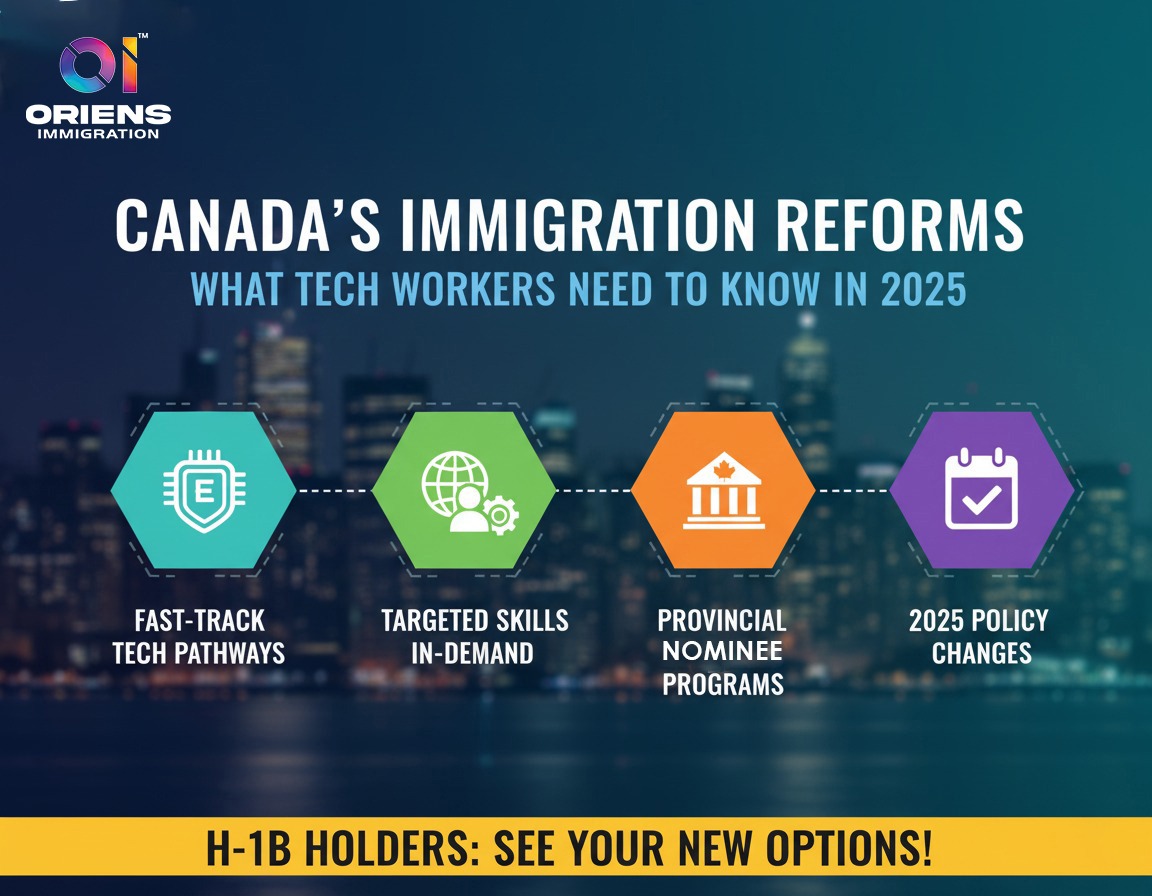













Canada continues to strengthen its reputation as a top destination for global tech talent. The 2025 reforms in Canada’s immigration landscape have introduced new pathways and competitive advantages for tech professionals, especially for those impacted by shifting H-1B scenarios in the US. Here’s an in-depth look at key developments, top visa programs, and strategic guidance for moving to Canada as a tech worker in 2025.
Canada’s Express Entry system remains the backbone of skilled immigration in the country. In 2025, category-based Express Entry tech draws specifically target STEM occupations, reducing CRS cut-offs and making it more accessible for tech workers. To boost your CRS score for tech occupations:
Aligning your NOC code for tech workers in Canada (such as Software Engineer NOC 21231 or Cloud Computing Specialist NOC 21232) further increases eligibility for STEM draws.
Canada is focusing on employer-driven immigration to directly connect international talent with growing tech employers.
Key programs include:
Employers can now refer foreign hires more easily, reducing red tape and offering stability for tech workers.
Several Provincial Nominee Programs (PNPs) have implemented tech-focused immigration streams:
2025 sees a surge in tailored opportunities for tech professionals:
With the US tightening H-1B requirements and introducing higher fees, many tech pros are weighing their options. In 2025, Canada’s process stands out due to:
Canada’s 2025 immigration reforms have created an unprecedented landscape for tech workers—whether you’re arriving directly from abroad, transitioning from an H-1B in the US, or leveraging your existing experience in cloud computing or AI. Stay up to date with Express Entry tech draws, align your career with high-demand NOC codes, consider lucrative provincial programs like BC PNP Tech or Alberta’s Accelerated Tech Pathway, and take advantage of employer-driven opportunities for a seamless immigration journey.
Canada is building the world’s most inclusive and innovative tech workforce—2025 is your year to join the future.
1. What are the main pathways for tech workers to immigrate to Canada in 2025?
The most popular routes include the Express Entry system (especially via tech draw rounds), Provincial Nominee Programs (PNPs) with tech-focused streams (such as BC PNP Tech Pilot and Alberta’s Accelerated Tech Pathway), and employer-driven options like the Global Talent Stream. Category-based Express Entry draws now specifically invite STEM professionals, lowering some CRS cut-offs for tech roles.
2. Can H-1B holders move to Canada easily?
Canada has introduced streamlined pathways, including dedicated work permits and LMIA-exempt streams, for H-1B visa holders who want to transition from the US to Canada’s growing tech workforce.
3. How do Express Entry tech draws work?
In 2025, Express Entry includes targeted tech draws that prioritize skilled professionals from STEM fields. These draws utilize specific NOC codes for roles such as software engineers, cloud architects, and ML engineers, often featuring lower CRS score thresholds for tech occupations.
4. What is the Global Talent Stream, and who qualifies?
The Global Talent Stream is a fast-track program that helps Canadian tech companies quickly hire foreign talent for high-demand tech roles. Most processing takes just two weeks, provided the Canadian employer is GTS-approved.
5. What is the significance of NOC code alignment for tech workers?
Accurately listing your tech occupation’s NOC code (e.g., 21231 for Software Engineers) ensures eligibility for targeted Express Entry and PNP tech draws, increasing your chances of being selected.
6. Is it easier to get PR through tech PNP streams than other pathways?
Provincial tech streams such as the BC PNP Tech Pilot and the Alberta Accelerated Tech Pathway are designed for in-demand tech roles. They often provide faster nominations and additional CRS points for Express Entry, significantly enhancing selection odds.
7. What are the prospects for cloud computing, machine learning, and AI professionals?
Canada has designated cloud computing and AI as critical skill areas, with dedicated PR and work visa pathways for these sectors. Expect quicker processing times, increased demand from employers, and better chances for permanent residency for machine learning engineers, data scientists, and cloud specialists.
8. How does Canadian tech immigration compare to the US?
Canada provides more transparent, points-based, and predictable immigration for tech workers. As US H-1B requirements tighten and costs rise, more global tech talent are choosing Canada for its pathways to PR, open work permits for families, and strong growth in tech hubs.


Oriens is your one-stop solution for resolving all immigration-related queries and getting assistance with the procedure. Our consultants work towards ensuring that your journey of settling abroad does not involve any sort of hustle-bustle. Providing a host of solutions, we aim to take responsibility for all errands and requirements of your visa application process.
© 2025 All rights reserved